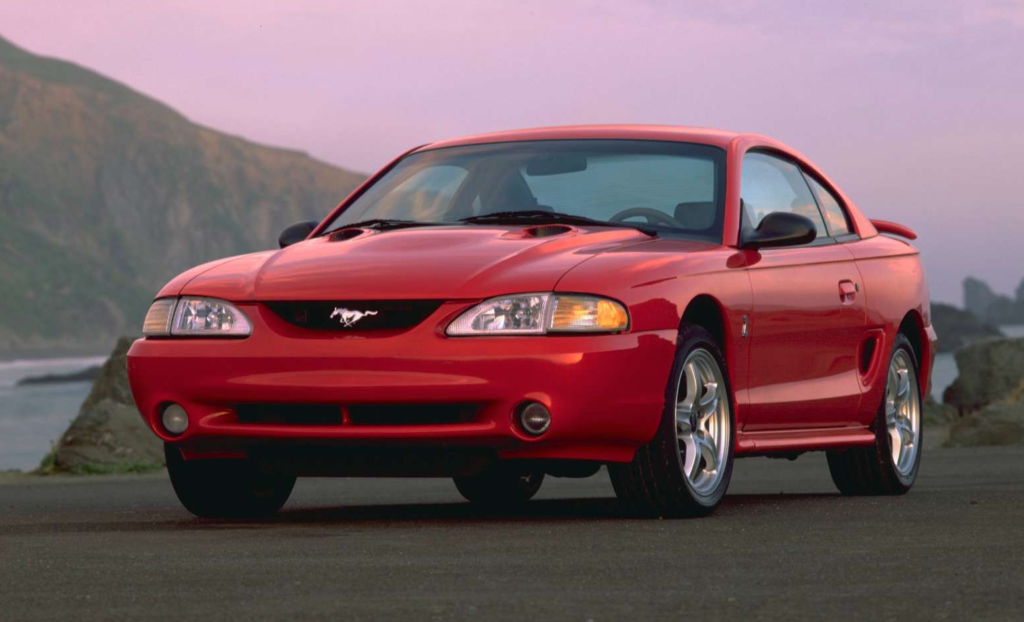How much does a Mustang weigh? A Mustang’s weight ranges from about 2,445 lbs in early models to 4,343 lbs in the 2025 Mustang GTD, depending on the engine, trim, and body style.
When it comes to iconic American muscle cars, the Ford Mustang has earned a legendary status. With its sleek design, powerful engine options, and thrilling driving experience, it’s no wonder that the Mustang remains a favorite among car enthusiasts. However, one question that often arises when discussing this beloved vehicle is: How much does a Mustang weigh?
The weight of a Mustang plays an important role in its performance, fuel efficiency, and handling, and understanding the various factors that contribute to its weight can help you make more informed decisions if you’re a Mustang enthusiast or potential buyer.
In this detailed article, we’ll explore the weight of the Ford Mustang across different generations, from the classic 1965 models to the latest 2025 editions. We’ll dive into the various factors that influence the weight, highlight weight differences across model years, and provide answers to frequently asked questions.

Contents
What Determines the Weight of a Mustang?
The weight of a Mustang is referred to as its curb weight, which is the total weight of the car with all fluids (including oil, coolant, and a full gas tank) but without passengers or cargo. Here are the main factors that determine how much a Mustang weighs:
1. Engine Type and Size
The engine is one of the most significant contributors to a Mustang’s overall weight. Larger engines, such as the 5.0-liter V8 or the supercharged V8 in the Shelby GT500, are considerably heavier than smaller engines, like the 2.3-liter EcoBoost I4. The engine size affects the vehicle’s overall weight because bigger engines require more materials, such as heavier blocks and additional components, which add to the curb weight.
2. Body Style
Mustangs come in a variety of body styles, such as the coupe, convertible, and fastback. Convertibles tend to weigh more than coupes due to the additional structural reinforcements needed to maintain rigidity and safety. For example, a Mustang GT Convertible will typically weigh more than a GT Coupe with the same engine because of these added structural elements.
3. Trim Level and Features
Higher trim levels of the Mustang often come with additional features and luxury options, which can add to the weight. For instance, Mustangs equipped with premium audio systems, advanced safety features, or larger wheels can weigh more than their base counterparts. Trims like the Shelby GT350 or GT500 tend to be heavier due to the advanced technology, performance-oriented components, and luxury amenities they offer.
4. Materials Used
Over the years, Ford has experimented with different materials to reduce the weight of the Mustang without compromising its performance or safety. For example, newer Mustangs may incorporate aluminum or composite materials in certain parts of the vehicle, such as the hood or doors, to reduce weight. On the other hand, older Mustangs, particularly those from the 1960s and 1970s, were built using heavier steel components, which added to the overall weight.

Mustang Weight by Generation
The Ford Mustang has undergone significant design and engineering changes over the years, and these changes are reflected in its weight. Below is a breakdown of the curb weight for each generation of the Mustang, starting from the original 1965 model all the way to the current 2025 edition.
First Generation (1965–1973)
The first-generation Ford Mustang, introduced in 1964, marked the beginning of the Mustang’s iconic legacy. This generation featured a relatively lightweight design compared to modern muscle cars. Here’s a look at the curb weights for different years:
- 1965: Around 2,445 lbs
- 1967: Between 2,758 lbs and 2,825 lbs, depending on the body style and options
- 1971: Between 3,058 lbs and 3,607 lbs, with larger engines adding more weight
- 1973: Up to 3,759 lbs, due to the addition of safety features and larger engines
Despite the initial lightweight design, the weight of the Mustang began to increase as Ford introduced more powerful engines and additional features.
Second Generation (1974–1978)
The Mustang underwent a significant transformation in 1974, becoming smaller and more fuel-efficient to meet new emissions and safety standards. This generation was often referred to as the Mustang II, and its weight was lighter than later models:
- 1974: Between 2,837 lbs and 2,958 lbs
- 1978: Between 2,663 lbs and 2,947 lbs
While lighter than the first-generation Mustangs, the Mustang II was also smaller and less powerful, with an emphasis on fuel economy and handling.
Third Generation (1979–1993)
The third-generation Mustang saw the return of the muscle car formula with a larger body and more powerful engine options. This generation introduced the Fox Body platform, which would become one of the most popular and beloved generations of the Mustang:
- 1979 Coupe: Between 2,515 lbs and 2,811 lbs
- 1987 GT Convertible: Approximately 3,214 lbs
The weight of the Mustang began to climb again with the introduction of more performance-oriented models and larger engines.
Fourth Generation (1994–2004)
The fourth-generation Mustang was a complete redesign that featured a more modern, streamlined design and a more refined driving experience. The weight of the Mustang continued to increase with the addition of safety features, airbags, and other improvements:
- 1994 GT Coupe: Around 3,276 lbs
- 1995 Cobra Convertible: Approximately 3,524 lbs
Fifth Generation (2005–2009)
The fifth generation brought the Mustang back to its muscle car roots, with a design that paid homage to the classic Mustangs of the 1960s. The weight of the Mustang continued to rise due to the addition of modern technology, larger engines, and safety improvements:
- V6 Coupe (2005): Around 3,350–3,420 lbs
- GT500 Coupe: Approximately 3,950 lbs
Sixth Generation (2015–2024)
The sixth-generation Mustang marked the introduction of more advanced technology, a new independent rear suspension, and the option of the turbocharged EcoBoost engine. As a result, the weight of the Mustang increased slightly:
- EcoBoost Coupe: Around 3,500 lbs
- GT Coupe: Around 3,700 lbs
- GT500 Coupe: Up to 4,225 lbs
The weight increase in this generation can be attributed to the increased emphasis on comfort, performance, and safety.
Seventh Generation (2025–Present)
The 2025 Mustang, representing the most recent generation, continues to evolve in terms of performance and technology. As Ford introduces new features and performance options, the weight of the Mustang has gone up:
- EcoBoost Fastback: Around 3,588 lbs
- GT Fastback: Approximately 3,763 lbs
- GT Premium Convertible: Between 3,933 lbs and 3,948 lbs
- Mustang GTD: Up to 4,343 lbs
This generation sees the introduction of advanced materials and technologies that continue to impact the overall weight, but the Mustang retains its signature muscle car performance.
Factors That Affect Mustang Weight
The overall weight of a Mustang is influenced by several key factors. Here are the main elements that determine the curb weight of the car:
- Engine Size: As mentioned earlier, the larger the engine, the heavier the Mustang will be.
- Transmission Type: Automatic transmissions are generally heavier than manual transmissions.
- Material Choices: Lighter materials, such as aluminum and composite panels, can reduce the weight of the Mustang.
- Body Style: Convertibles typically weigh more than coupes because of the additional reinforcements required for structural integrity.
Frequently Asked Questions
Here are some FAQs about Mustang weight –
1. Why does the weight of a Mustang matter?
The weight of a Mustang impacts its acceleration, handling, fuel efficiency, and overall performance. A lighter vehicle typically has better acceleration and handling, while a heavier vehicle might offer more stability and comfort.
2. What’s the lightest Mustang ever made?
The 1965 Ford Mustang is considered one of the lightest models ever made, with a curb weight of just around 2,445 lbs.
3. How can I reduce the weight of my Mustang?
There are several ways to reduce the weight of your Mustang, including replacing parts with lightweight materials, upgrading to lighter wheels, or removing unnecessary features like a spare tire or heavy accessories.
4. Does the Mustang’s weight affect its fuel efficiency?
Yes, a heavier vehicle tends to use more fuel due to the increased load. Lighter vehicles are generally more fuel-efficient.
5. Which Mustang model weighs the most?
The 2025 Ford Mustang GTD, which weighs up to 4,343 lbs, is one of the heaviest models due to its advanced technology and high-performance features.
Conclusion
Knowing how much a Mustang weighs is more than just a matter of curiosity—it’s an important factor that affects everything from the car’s handling to its fuel economy. As we’ve seen, the weight of the Mustang has evolved over the years, with changes in engine size, materials, and technology all contributing to the overall curb weight.
Whether you’re considering purchasing a new Mustang or restoring a classic, knowing the weight of your Mustang can help you better understand its performance characteristics and make more informed decisions.




